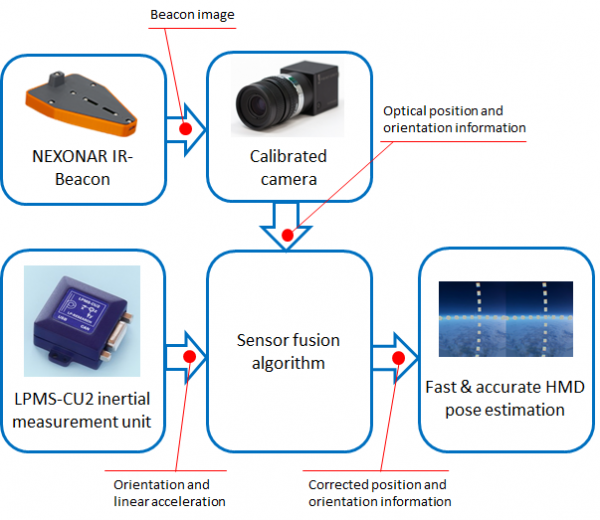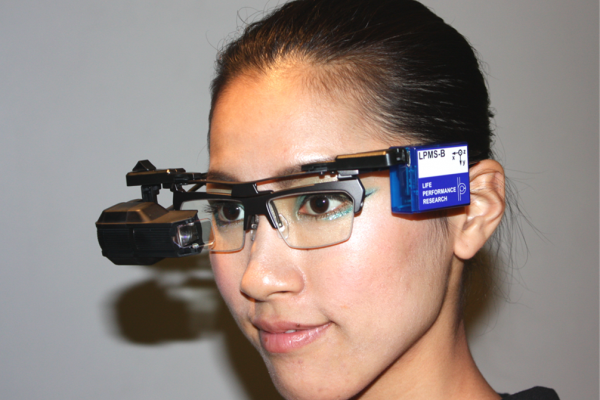Sensor Fusion for Virtual Reality Headset Tracking
In order to test the functionality of our sensor fusion algorithm for head-mounted-display pose estimation, we connected one of our IMUs (LPMS-CURS2), a Nexonar infrared (IR) beacon and a LCD display to a Baofeng headset. The high stability of the IR tracking and the orientation information from the IMU as input to the sensor fusion algorithm result in accurate, robust and reactive headtracking. See the figure below for details of the test setup. The video shows the resulting performance of the system.


